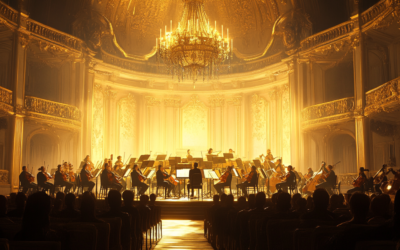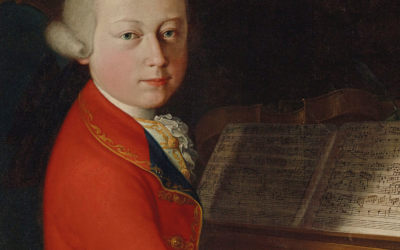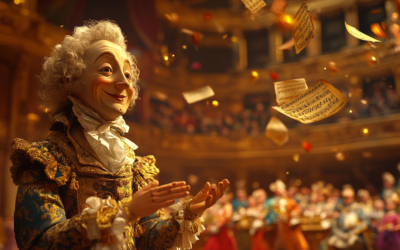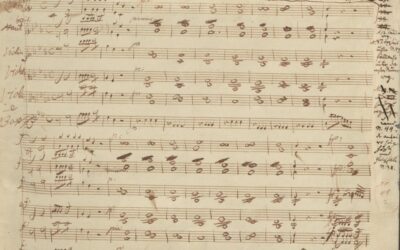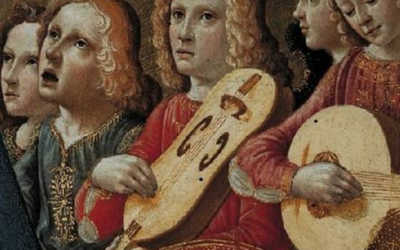The Milanese Quartets
The Uncertain Origins of Mozart's Early String Quartets
Mozart’s so-called “Milanese Quartets” (K.155, 158, and 159) have long been subject to debate, primarily due to their ambiguous instrumentation and structural weaknesses.
Often classified as “Divertimento Quartets,” these works raise questions about their intended ensemble and whether they truly belong to the string quartet genre.
Were they originally part of a series of orchestral divertimenti? Or were they hastily adapted for string quartet?
Comparisons with the revolutionary works of Cambini and Sacchini suggest Mozart was grappling with influences that far outshone his immature efforts. Even today, the “Milanese Quartets” remain a puzzle, reflecting both the promise and limitations of the young Mozart’s early development.
Mozart: The Fall of the Gods
This book compiles the results of our studies on 18th-century music and Mozart, who has been revered for over two centuries as a deity. We dismantle the baseless cult of Mozart and strip away the clichés that falsely present him as a natural genius, revealing the contradictions in conventional biographies. In this work, divided into two parts, we identify and critically analyze several contradictory points in the vast Mozart bibliography. Each of the nearly 2,000 citations is meticulously sourced, allowing readers to verify the findings. This critical biography of Mozart emerges from these premises, addressing the numerous doubts raised by researchers.
"Sometimes, it seems, Mozart had little more to say."
Mozart: The Fall of the Gods
The Uncertain Origins of Mozart’s Early String Quartets
Mozart’s so-called “Milanese Quartets” (K.155, 158, and 159) are, in fact, better described as “Divertimento Quartets.” This classification arises from the ambiguous instrumentation present in these works, which suggests they might have been intended for a more flexible ensemble. In the autograph manuscripts, the term “violini” is used to indicate both the first and second violins, while for K.158, Mozart inscribed “viole e bassi,” and for K.159, “viola e basso.” In K.155, he initially wrote “viole” but later corrected it to “viola,” adding “violoncello” above “basso.” Only in K.156 and K.160 are the four string instruments clearly specified, while K.157 lacks any indication of instrumentation altogether.
The problematic nature of the instrumentation leads some to question whether these works genuinely form a cohesive quartet cycle. As Wolfgang Plath remarked, “playing them with more instruments would sound particularly poor, especially in the slow movements.” It’s possible that Mozart initially intended to continue the orchestral series of Divertimenti K.136, K.137, and K.138 but later repurposed them as string quartets.
Thus, it’s reasonable to interpret the corrections in the autograph of K.155 as attempts to define the instrumentation for a complete cycle, implying the involvement of two violins, a viola, and a cello.
In Italy, the quartet’s roots trace back directly to the concerto form. Italian composers like Durante, Galuppi, Tartini, and Cambini demonstrated this transition from concerto to quartet through pieces that gradually reduced the overall sound while fostering a more intimate conversation between four instruments, which were now equal in rights and duties. The basso continuo, once essential, became redundant.
In contrast, the German quartet evolved from the divertimento. Here, the basso continuo also disappeared, but for more practical reasons: divertimentos were often performed outdoors, where a continuo would be unnecessary. However, these works were regarded as light, entertaining music with little expressive ambition.
The manuscript of Mozart’s first “Milanese Quartet” is a neat, clean copy, typical of most of his autographs. Nationalist fanatics assumed that Wolfgang composed without errors, but it’s more likely that the rough drafts were discarded once a fair copy was made. As Mozart completed his “Milanese Quartets,” his contemporary, Giuseppe Cambini, was publishing his Op.1 quartets in Paris, which would eventually lead to over 150 publications by 1809. A simple comparison of Cambini’s revolutionary, stylistically coherent language with Mozart’s “Milanese” quartets reveals the latter’s disjointed structures and thematic poverty.
It’s important to highlight the stylistic and historical value of Antonio Sacchini’s Op.2 quartets, written when Mozart was just twelve years old. These quartets, which were published in London in 1778 but date to the late 1760s, are considered by some as the most “Mozartian” quartets of the time. This raises the question: did Mozart hear them in Venice, alongside the works of Bertoni and Latilla?
The six quartets by Venanzio Rauzzini also demonstrate that “Mozartian” art predated Mozart himself. In the case of K.155, composed during the Mozart family’s Italian tour, we can observe the close working relationship between father and son, as they shared everything, even the composition process.
The “Milanese Quartets” exhibit several weaknesses. K.155’s Allegro is uniform, with limited conversational interaction between the instruments, and its ideas are underdeveloped. The Andante is repetitive and plagued by gratuitous effects, while the Molto Allegro’s theme is so minimalist that it fails to leave a lasting impression.
K.156 shows operatic influences but with an archaic flavour, reminiscent of Leopold Mozart’s older style. The more complex version of the Adagio was replaced by a simpler one, raising doubts about the accepted dating of the work.
The origins of these quartets remain shrouded in mystery. None of the autographs are dated, and their chronology is uncertain. Letters from Leopold mention quartets but offer vague clues as to which works they refer to. For instance, Leopold’s letter from 28 October 1772, written in Bolzano, states: “Wolfgang is bored and has started writing a quartet.” Later, on 6 February 1773, he wrote again: “Wolfgang is writing a quartet.”
Despite Einstein’s confidence that these letters refer to K.155 and K.157, Wolfgang Plath found no solid evidence to support such claims. The term “Milanese” is also misleading, as one quartet may have been composed in Bolzano, while another bears a distinctly German character.
In closing, while these early quartets show flashes of creativity, they often fall short. K.157 ends with a predictable Rondo, K.158 pays homage to the Italian violin school but lacks freedom, and K.159’s final movement feels like a caricature of courtly dances. Even the final quartet in the series, K.160, suffers from a lack of originality, particularly in its over-structured Allegro and underdeveloped Poco Adagio.
Mozart’s early quartets thus reflect the influence of his contemporaries more than any groundbreaking innovation on his part, a reminder that the young composer was still finding his voice in the shadow of greater masters.
You May Also Like
Rediscovering Musical Roots: The World Premiere of Gasparini and Mysliveček
This December, history will come alive as the Camerata Rousseau unveils forgotten treasures by Quirino Gasparini and Josef Mysliveček. These premieres not only celebrate their artistry but also reveal the untold influence of Gasparini on Mozart’s Mitridate re di Ponto. A pivotal event for anyone passionate about rediscovering music history.
The Curious Case of Mozart’s Phantom Sonata
In a striking case of artistic misattribution, the Musikwissenschaft has rediscovered Mozart through a portrait, attributing a dubious composition to him based solely on a score’s presence. One has to wonder: is this music really Mozart’s, or just a figment of our collective imagination?
The Illusion of Canonic Mastery
This post explores the simplistic nature of Mozart’s Kyrie K.89, revealing the truth behind his early canonic compositions and their implications on his perceived genius.
The Unveiling of Symphony K.16
The Symphony No. 1 in E-flat major, K.16, attributed to young Wolfgang Mozart, reveals the complex truth behind his early compositions. Far from the prodigious work of an eight-year-old, it is instead a product of substantial parental intervention and musical simplification.
The Cibavit eos and Mozart’s Deceptive Legacy
The Cibavit eos serves as a striking reminder that Mozart’s legacy may be built on shaky foundations, questioning the very essence of his so-called genius.
K.143: A Recitative and Aria in the Shadows of Doubt
K.143 is a prime example of how Mozart scholarship has turned uncertainty into myth. With no definitive evidence of authorship, date, or purpose, this uninspired recitative and aria in G major likely originated elsewhere. Is it time to admit this is not Mozart’s work at all?


